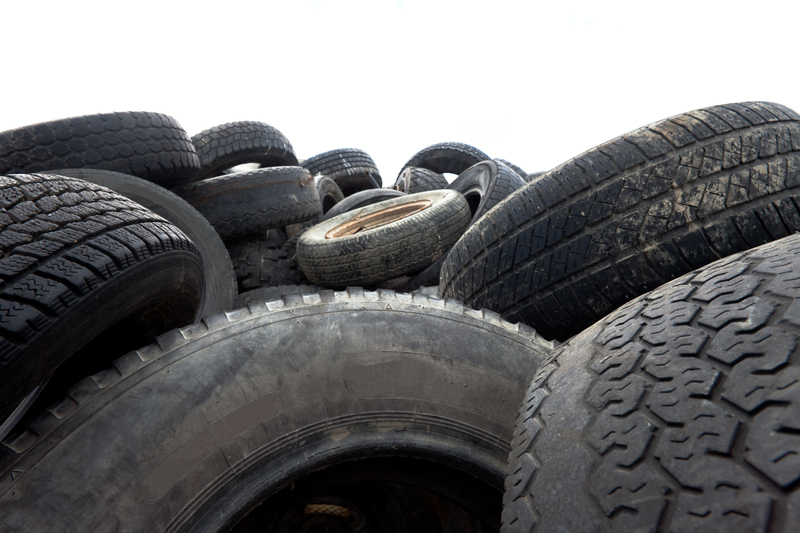How to Set Up a PPE Waste Disposal System at Home or Work
PPE waste management has become critical in homes and workplaces due to global health crises and evolving safety practices. Improper disposal of used personal protective equipment (PPE) such as masks, gloves, and face shields can lead to environmental pollution, health hazards, and regulatory non-compliance. This comprehensive guide will help you establish an effective PPE waste disposal system at home or your workplace, following best practices for safety, hygiene, and eco-friendliness.
Why a PPE Waste Disposal System Is Essential
Understanding the necessity for a dedicated PPE waste disposal system is the first step. Discarded personal protective equipment is often contaminated with harmful pathogens, chemicals, or particulates. Mixing it with general waste increases the risk of infection and environmental contamination. A well-designed PPE waste management system ensures personal safety, protects public health, and adheres to local or national regulations.
Main Benefits of PPE Waste Segregation
- Prevents cross-contamination between hazardous and household/office waste.
- Reduces the spread of infection, especially in residential spaces with vulnerable individuals.
- Facilitates proper disposal by municipal or private waste handling companies.
- Supports environmental protection efforts by minimizing landfill pollution and plastic waste.
- Ensures compliance with safety laws and workplace guidelines.

What Is PPE Waste?
PPE waste includes any used or contaminated items designed to protect individuals against health or safety risks. It typically encompasses:
- Face masks (surgical masks, respirators, cloth masks)
- Gloves (latex, nitrile, vinyl, disposable or reusable)
- Face shields and goggles
- Protective gowns, aprons, and shoe covers
- Sanitary wipes and tissues used during PPE handling
At workplaces, especially in healthcare, cleaning, or manufacturing industries, PPE includes more items, but for home and general office use, masks and gloves are most common.
Guidelines for PPE Waste Disposal at Home
Households regularly using PPE for errands, personal care, or illness management should follow these simple but effective PPE disposal guidelines:
1. Designate a PPE Waste Bin
- Set up a clearly labeled bin exclusively for disposable PPE. Place it in easily accessible locations: near entryways, bathrooms, or home quarantine zones.
- Line the bin with a strong, leak-proof plastic bag to prevent leaks or contamination.
2. Safe Removal and Handling of Used PPE
- After use, carefully remove gloves and masks without touching the outside layer. Practice proper hand hygiene immediately afterward.
- Avoid crushing or compressing the waste to prevent the potential release of trapped pathogens.
3. Double-Bag the Waste
- Seal the inner bag tightly when ~3/4 full, then place it inside another sturdy bag. Double-bagging reduces the risk of leaks and accidental exposure.
4. Mark the Bag
- Use a marker or tape to label the bag prominently as "PPE Waste" or "Biohazard" (if household members are ill or immunocompromised).
5. Disposal Method
- Contact your local authority for PPE collection days or drop-off points. Many municipal waste services have introduced special drop-offs for household medical waste.
- If sending to regular trash, ensure the bag is securely closed and not accessible to wildlife, pets, or children.
6. Disinfect PPE Waste Collection Points
- Regularly clean and disinfect the PPE waste bin area with EPA-approved disinfectants to maintain hygiene.
7. Special Considerations for Illness or Quarantine
- If someone in the household is sick or quarantined, treat all their waste as potentially infectious. Use gloves during handling and wash hands thoroughly after disposal.
PPE Waste Management for Workplaces
Establishing a PPE waste disposal system at work involves more structure, training, and compliance. Here is a step-by-step approach to setting up PPE waste management in offices, healthcare, retail, or industrial settings.
Step 1: PPE Waste Assessment
- Identify the types of PPE used based on roles and risk areas (e.g., frontline workers, cleaners, or general employees).
- Determine the estimated volume of daily PPE waste to size the bins and frequency of collection.
Step 2: Choose Suitable Waste Containers
- Use color-coded bins (yellow or red for infectious waste, as per local guidelines) with lids and foot pedals to avoid hand contact.
- Ensure bins are labeled ("PPE Waste Only", "Contaminated Waste") and placed in strategic locations--entrances/exits, restrooms, workstations, and communal areas.
- For healthcare or higher-risk workplaces, bins should comply with biohazard safety standards.
Step 3: Staff Training & Awareness
-
Conduct training sessions on:
- Proper use and disposal of PPE
- How to recognize and handle contaminated items
- Steps in double-bagging and labeling waste
- Incident reporting for accidental exposure
- Place posters near waste bins for quick visual guidance.
Step 4: Collection and Storage Protocols
- Schedule regular collection intervals to avoid overfilled bins.
- Store full bags in a secure, well-ventilated room or locked container until pickup by authorized waste handlers.
Step 5: Arranging Proper Disposal
- Engage certified medical or hazardous waste disposal companies if required by law. They offer safe PPE waste collection, transportation, and treatment (e.g., incineration, autoclaving).
- Maintain documentation of all disposals for inspection or regulatory purposes.
Step 6: Routine Disinfection and Maintenance
- Clean and disinfect all collection bins and storage areas daily.
- Review and update waste handling procedures periodically, especially if new PPE items are introduced.
Regulations & Compliance: Know Your Local Rules
PPE waste disposal regulations vary by region and may be stricter in healthcare, laboratory, or food-service settings. Always check:
- Local environmental and public health authority guidelines
- Occupational safety regulations (OSHA, CDC, WHO, or your country's equivalent)
- Municipal solid waste department protocols for homes
Non-compliance can result in hefty fines and reputational damage, so ensure your PPE waste management process follows legal requirements.
Eco-Friendly Tips for PPE Disposal
The tragic environmental impact of millions of disposable masks and gloves entering landfills--and waterways--has prompted a push for sustainable PPE waste solutions. Here are some responsible practices:
- Minimize single-use PPE by choosing reusable cloth masks or washable face coverings whenever safe and appropriate.
- Look for take-back schemes in your community or pharmacy chains that recycle specific PPE items.
- Avoid burning or flushing PPE waste, as this pollutes air and water.
- If using reusable PPE, clean and disinfect thoroughly between uses as per manufacturer guidelines.
Key Safety Precautions While Handling PPE Waste
- Always wear new gloves when collecting or handling used PPE waste.
- Practice respiratory hygiene--avoid touching your face, and wash hands before and after handling any waste.
- Don't compact the waste manually, as this could release particles or fluids.
- Educate all household members or staff on these precautions for consistent safety.
Common Mistakes to Avoid
Even when a PPE waste disposal system is in place, some pitfalls can undermine its effectiveness:
- Mixing PPE waste with regular recyclables or compost materials
- Leaving PPE waste bags unsealed or overfilled
- Failing to replace bin liners after each collection
- Ignoring disposal procedures when in a rush
- Not labeling waste containers clearly

Frequently Asked Questions About PPE Waste Disposal
How often should PPE waste be collected?
At home: Every 1-2 days, especially if someone is sick.
At work: Daily or as soon as bins reach 75% capacity.
Are there reusable alternatives to disposable PPE?
Cloth masks and some face shields can be reused after washing/sanitizing, but items like disposable gloves must not be reused. Always check safety guidelines before switching.
Can I recycle used PPE?
Most PPE is not recyclable through standard household recycling due to contamination risk. Some specialized programs may accept clean, non-contaminated PPE for energy recovery.
Should PPE worn by a sick person be treated differently?
Yes. Double-bag it, label it "biohazard", and limit handling. If in doubt, follow regulated medical waste procedures.
Conclusion
Setting up a PPE waste disposal system at home or work is a vital step in safeguarding health and the environment during daily living or crisis situations. By dedicating proper bins, educating users, following safety protocols, and adhering to legal requirements, you minimize risks while showing responsibility to your community and the planet.
- Remember: Consistency and clarity are the keys to an effective PPE waste management system--make it a part of your daily routine for lasting results.
Further Resources
Protect your health, protect others, and preserve nature--start your safe PPE waste disposal system today.
